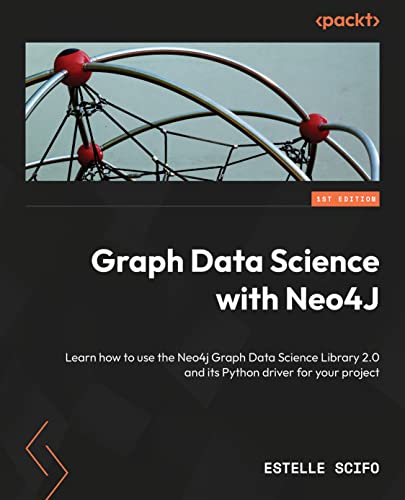

Most ebook files are in PDF format, so you can easily read them using various software such as Foxit Reader or directly on the Google Chrome browser.
Some ebook files are released by publishers in other formats such as .awz, .mobi, .epub, .fb2, etc. You may need to install specific software to read these formats on mobile/PC, such as Calibre.
Please read the tutorial at this link: https://ebookbell.com/faq
We offer FREE conversion to the popular formats you request; however, this may take some time. Therefore, right after payment, please email us, and we will try to provide the service as quickly as possible.
For some exceptional file formats or broken links (if any), please refrain from opening any disputes. Instead, email us first, and we will try to assist within a maximum of 6 hours.
EbookBell Team

4.0
56 reviewsUnlock the power of your data with Neo4j: the leading graph database for data science and machine learning applications.
Key Features
Learn how to deal with a graph database
Extract meaningful information from graph data
Use Graph Algorithms into a regular Machine Learning pipeline in Python
Book Description
Neo4j and its Graph Data Science Library is a complete solution to store, query and analyze graph data. Graph databases are getting more popular among developers, which means data scientists are likely to face such databases in their future career. Moreover, graph algorithms are a trending topic which enable extracting context information and improve overall model prediction performance. Data scientists working with Python will be able to put their knowledge to work with this practical guide to Neo4j and its Graph Data Science Library. The book provides a hands-on approach to implementation and associated methodologies that will have you up-and-running. Complete with step-by-step explanations of concepts and practical examples. You will begin by querying Neo4j with Cypher and characterize graph datasets. You’ll learn how to run graph algorithms on graph data stored into Neo4j, understand the core principles of the Graph Data Science Library to make predictions and write data science pipelines. Using the newly released GDSL Python driver, you will be able to include graph algorithms into your normal ML pipeline. By the end of this book, you will be able to take advantage of the relationships in your dataset to improve your current model and make other types of prediction.
What you will learn
Querying graph databases such as Neo4j using the Cypher query language
Build graph datasets from your own data and public knowledge graphs
Extract new kind of features thanks by connecting observations
Make graph-specific predictions such as link prediction
Build a graph data science pipeline with Neo4j
Who This Book Is For
Data Scientists and data professionals who have learnt the